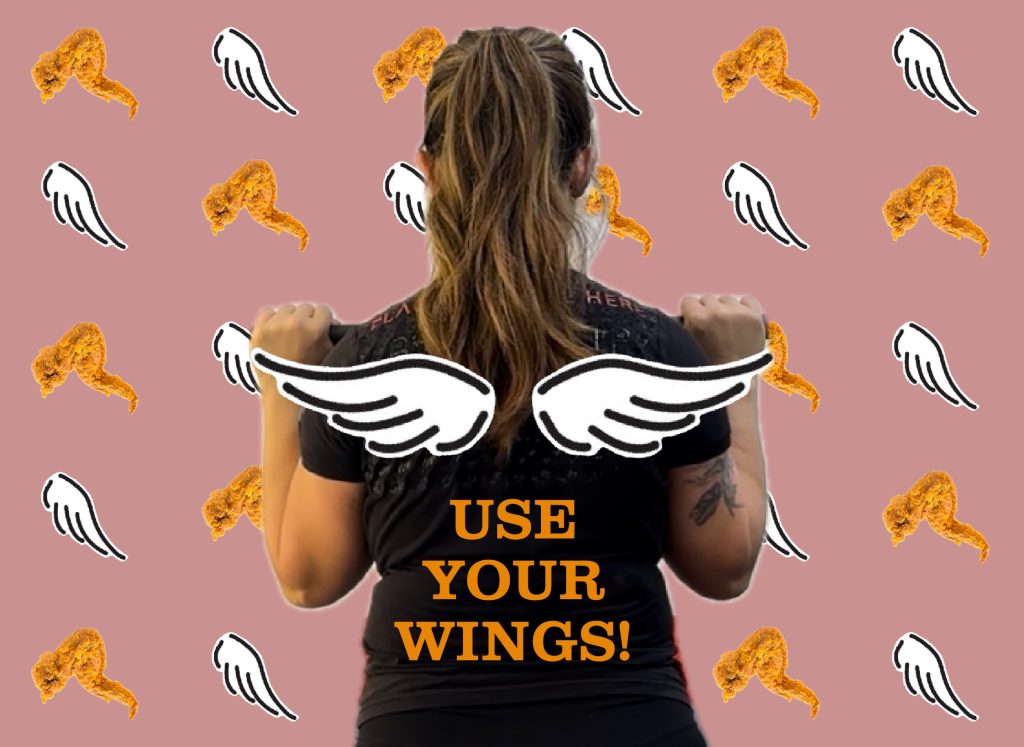
After a period of lifting, an attentive and earnest lifter like you will be familiar with terms like “form errors” and “efficient bar path”. As you progress to heavier weights, you start to pay more attention to what makes or breaks a heavy set. Sometimes, even if your understanding and execution of the lift’s movement is as accurate as it can be, you still feel like that set of five could have been just a little better.
When most people discuss lifting, muscles that take the spotlight are often the prime movers that do the heavy lifting— quads, glutes, hamstring, triceps, delts and pecs. Today, I would like to shift your focus away from them and instead consider your upper back muscles, which I will refer to as “wings.”
Wings, what?
Your back muscles are made of large sheaths of muscles that connect between various points of the skull, spine, ribs, clavicle, shoulder blades, pelvis, and even the humerus – specifically near your armpit. When these muscles are squeezed tight, they transform your torso from a stack of soft jelly into a rigid and stable steel column. This column provides greater stability and transfers force more effectively than the stack of jelly. If you are strong enough to lift a weight with a less-than-tight jelly back, you will most definitely lift that same weight effortlessly if you will just use those wings of steel to improve your lift.
The way I visualise the engagement of the wings is like a general concept that can be applied across the lifts. I want the wings to be a reminder to keep my back tight and also to influence some stability through that connection underneath the armpits.
Here are some “Wing-tips” you can use during the main lifts:
Wings in the Bench
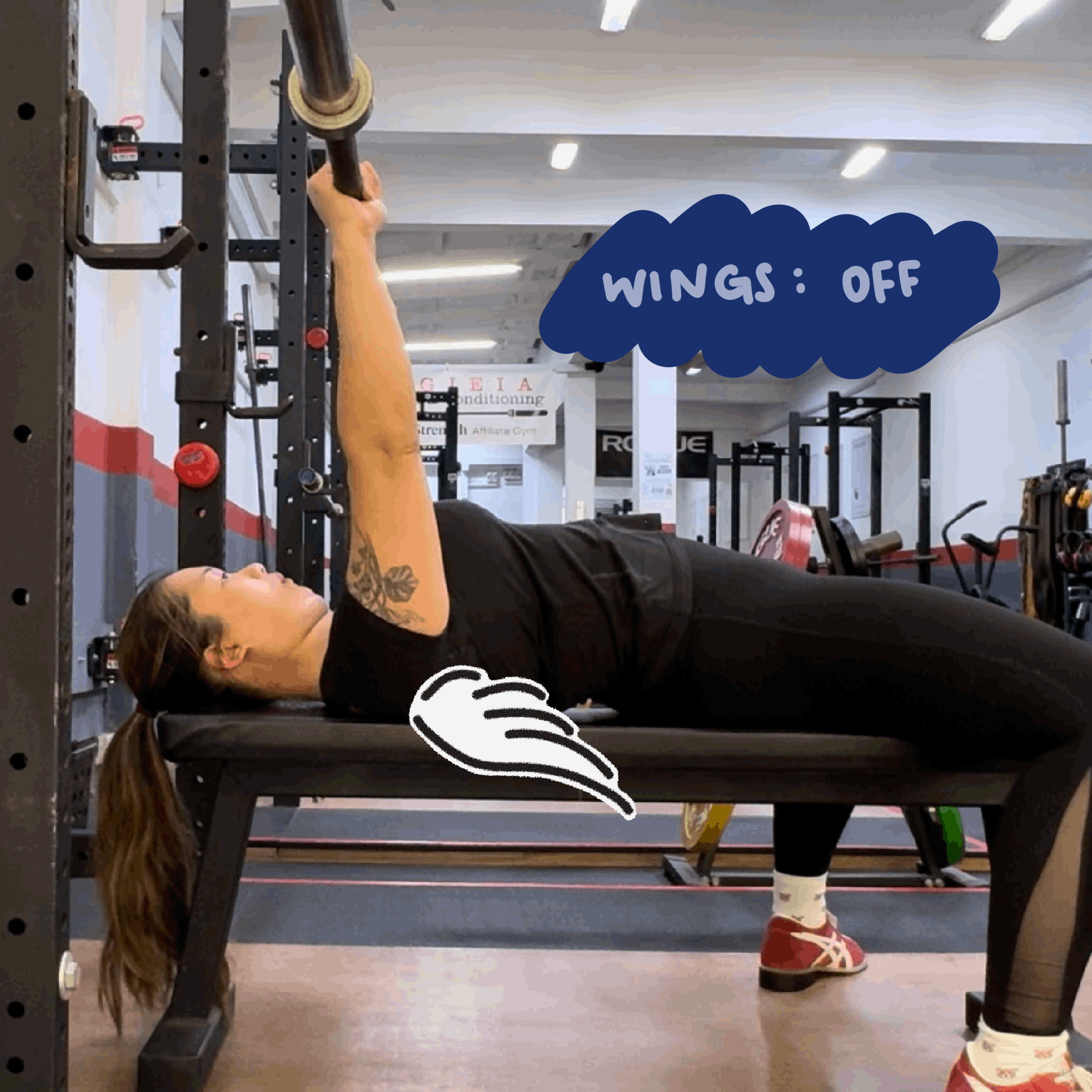
When you arch your back, retracting your shoulders and bracing them down into the bench’s surface, you create a stable platform for your shoulders to balance the load. Part of your wings, the latissimus dorsi muscles, connect from your spine to the anterior part of your upper arm at the humerus. The crossing of this muscle underneath your armpits helps stabilize your upper arms as you press the bar from your chest to lockout.
When pressing the bar back up, I like to think of my wings being tucked and squeezed below my shoulder blades, with the tips of my wings touching each other between the bench and the ground. At no point during the set do the wings stop touching. This allows me to maintain the arch and tightness in my torso throughout the set.
Wings in the Deadlift
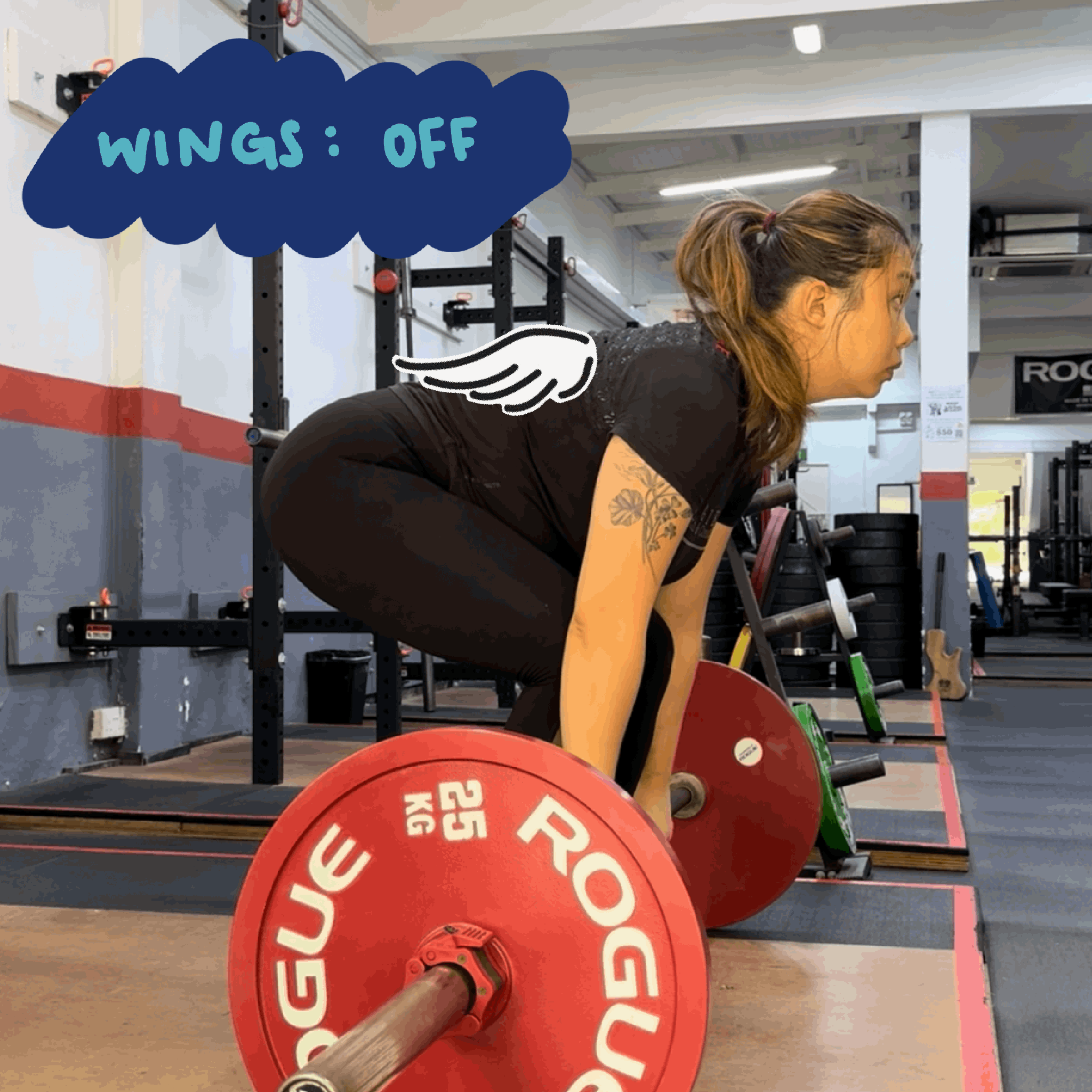
As much as the deadlift involves the muscles around your knees and hips, it is very much a back exercise as well. An efficient and successful deadlift is done with the back in rigid extension, providing stability as an effective force transfer tool from your knees and hips, and with the lats pulling back on your upper arms through your armpits to keep the bar over the midfoot.
“Wings” as a reminder in the deadlift works in two ways: first, to remind you to arch your back, and second, to prompt that final squeeze through your lats. I like to think of my wings being pulled backwards at the moment the bar peels off the floor against my shins. This cue helps set you up for a more efficient pull, ensuring the bar stays in contact with your legs from the floor to lockout.
Wings in the Press
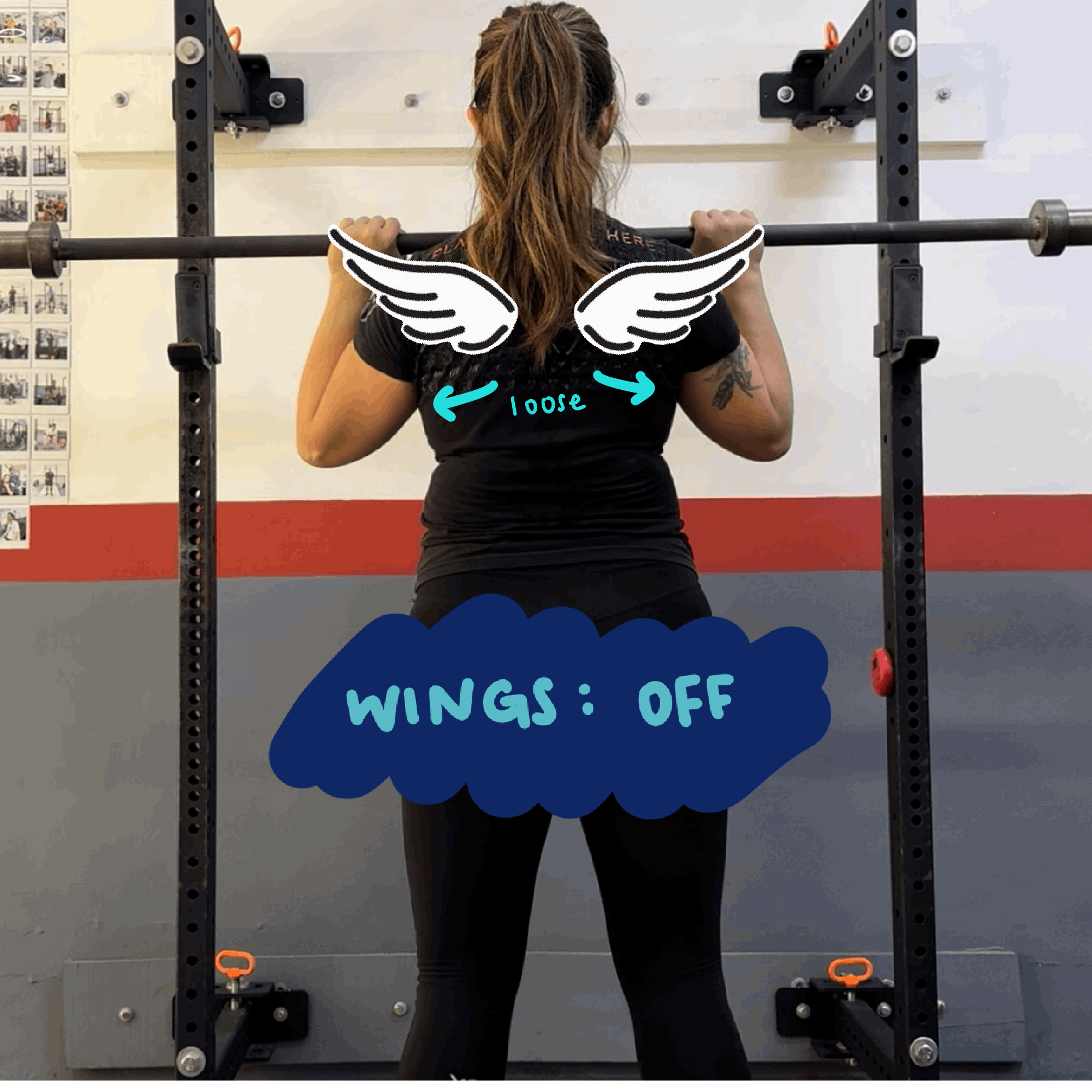
The press is unforgiving and relentless when it comes to bar path efficiency. A heavy rep can fail at the slightest leak of tightness or the smallest deviation in bar path.
It is crucial to understand the value of preparing every inch of your body before even moving the bar. Calling your wings into command reinforces a tightly extended rigid back and a stable and efficient starting position for your elbows via the squeezed armpits (yes, the lats again!). Consistently having these in place will likely result in more efficiently performed presses. Bonus for the bigger guys – huge lats can double up as a resting rack when you set up for the next rep.
Also, this is the lift where you get to stretch the ends of your wings all the way up to the ceiling!
Wings in the Squat
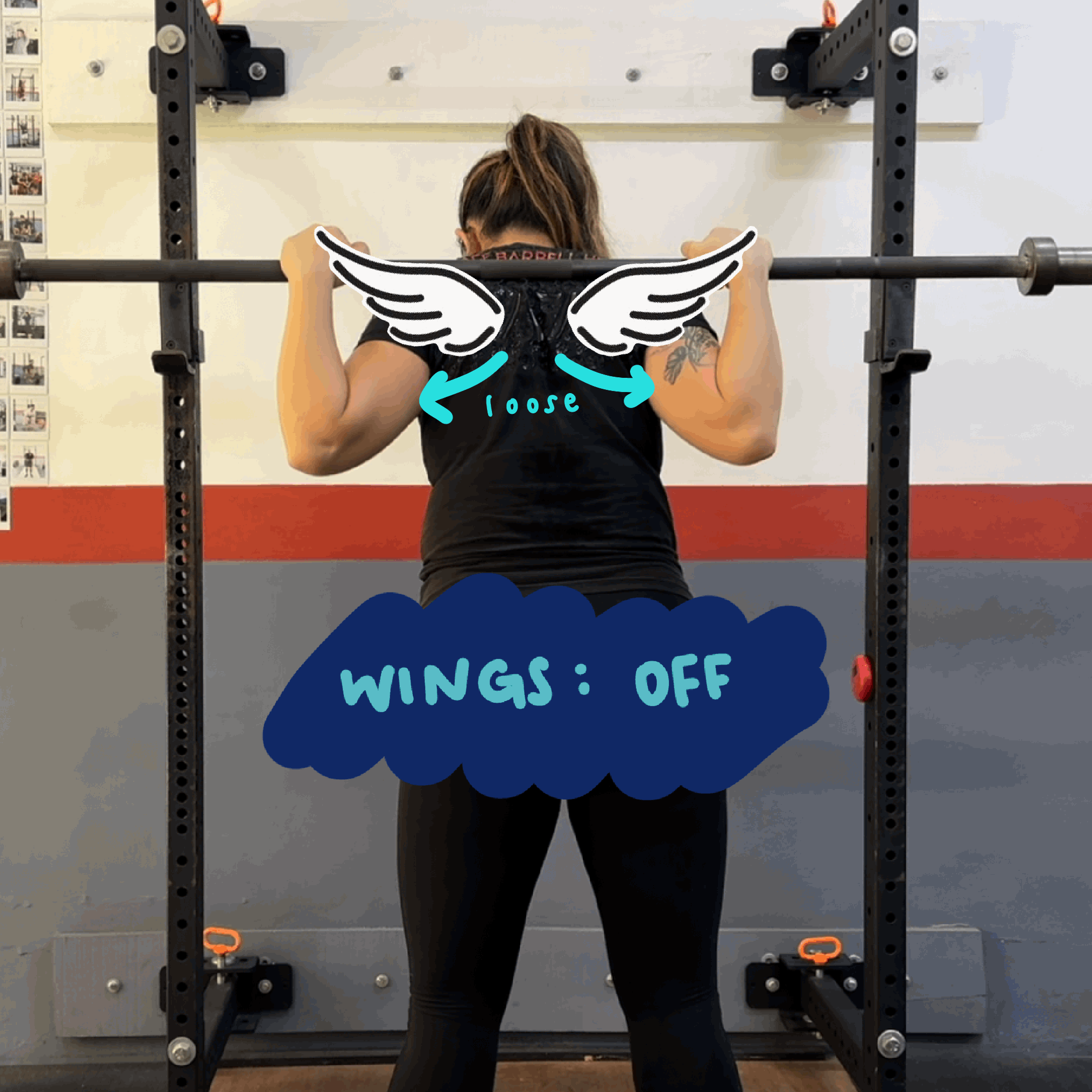
The major players in the squat are muscles around the knees and hips, but let’s not forget about your backstage workers: the back muscles (again). They contract isometrically to counter one of the more common issues in the squat, which is a loose back. The ever-important extended, rigid back plays a role in being an efficient force transfer tool, channelling force production from your knee and hip extensors to the bar on your back. Because of its rigidity, along with elbows locked in place, rear deltoids scrunched up, these markers result in a stable shelf where the bar can sit snugly without rolling around.
When I think about the wings as a reminder during a squat rep, I try to imagine my shoulder blades being tucked tightly against each other, with my arms/wings pulling the bar down into the shoulder blades. If you find that the bar rolls out of place through the rep and gets worse through a set, causing you to tip out of balance, this tip might be useful for you!
You should notice a pattern by now: thinking about using your wings shares a similar function across all main lifts. The need for a rigid extended back and a harder squeeze on your lats is inescapable. Subtle as it may be, using your wings might make a significant difference.
For newer lifters, aim to squeeze your wings at about 110%, because if you think your wings are on – it’s probably not enough. For those with a little more lifting experience, consider using them at full capacity through the whole set, leaving little to no room for relaxation. You may not actually get airborne, but I hope your wings can now take part and make the bar’s flight a smoother one.

